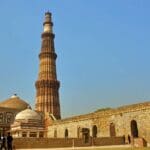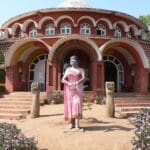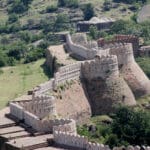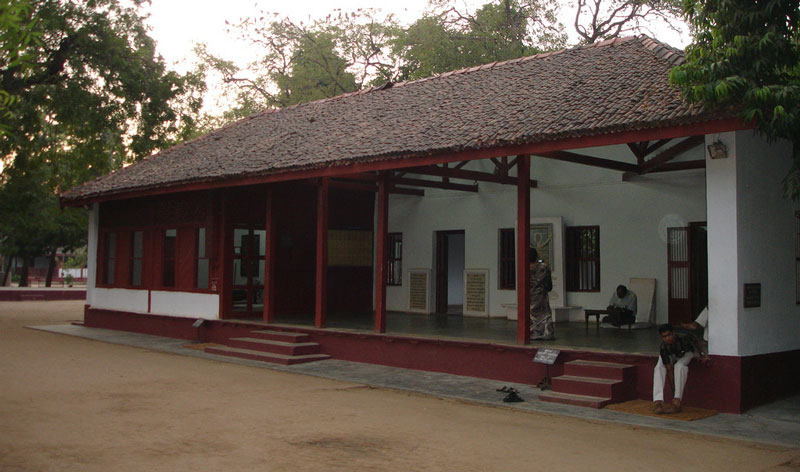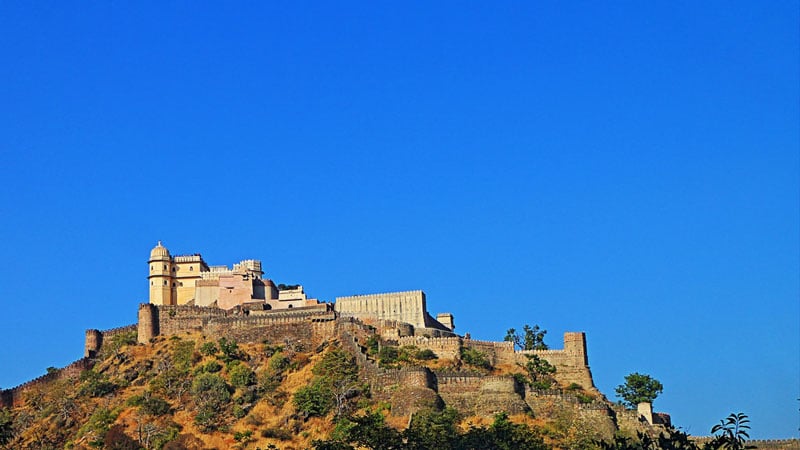Kailasanathar Temple, located in the ancient city of Kanchipuram, Tamil Nadu, is one of the most important and revered temples dedicated to Lord Shiva. This historic temple is an architectural masterpiece and is often regarded as one of the finest examples of early Dravidian architecture. Here’s a detailed overview of Kailasanathar Temple:
Introduction to Kailasanathar Temple
The Kailasanathar Temple is dedicated to Lord Shiva, known here as Kailasanathar. The temple is believed to have been constructed during the Pallava dynasty in the 8th century by King Rajasimha (also known as Narasimhavarman II). The temple’s design and architecture reflect the grandeur and artistic excellence of the Pallava period.
The temple is not just an important religious site but also a symbol of the rich cultural and architectural heritage of Kanchipuram, which was once the capital of the Pallava kings.
Architectural Significance
The architecture of Kailasanathar Temple is one of its most outstanding features. The temple complex is designed in the form of a rectangular layout, with multiple shrines and a large central sanctum. The main sanctum houses the idol of Lord Kailasanathar (Shiva). The temple is known for its simple yet elegant architectural style, characterized by beautifully carved stone pillars, intricate sculptures, and impressive frescoes that narrate the various legends and stories of Shiva.
The Sanctum and Structure
The main sanctum of the temple enshrines a lingam representing Lord Shiva. The temple’s layout is quite unique, as it is built in the form of a miniature mountain, a feature that is typical of Dravidian architecture. The temple is surrounded by a series of pillared halls and side shrines, dedicated to various deities of the Hindu pantheon.
The temple is constructed using sandstone and is embellished with stunning carvings, sculptures, and murals that portray a variety of divine figures, gods, and goddesses from Hindu mythology. The carvings also showcase detailed depictions of Siva’s cosmic dance and other significant events from ancient epics.
Intricate Pillars and Mandapams
The temple complex contains several mandapams (pillared halls), each adorned with detailed sculptures that narrate the mythological stories of Lord Shiva, Lord Vishnu, and other divine entities. These carvings are particularly significant, as they represent the cultural and artistic peak of the Pallava dynasty.
Significance in Hindu Mythology
The Kailasanathar Temple is not just a marvel of architecture but also a major spiritual center for Hindus. The temple is believed to be an important site for worshipping Lord Shiva, particularly in the form of Kailasanathar, who is said to be the lord of the highest heaven, Kailasa. The temple is visited by thousands of devotees annually who come here to seek Lord Shiva’s blessings.
It is also believed that the temple’s sanctum is connected to the mythological stories of Lord Shiva’s cosmic dance, the Ananda Tandava. According to Hindu mythology, it is in the sacred space of this temple that Lord Shiva is said to have performed his divine dance.
Festivals and Rituals
The Kailasanathar Temple is known for celebrating a variety of festivals throughout the year. Some of the most important festivals include:
- Maha Shivaratri: This is the most significant festival celebrated at Kailasanathar Temple. Devotees from all over the country gather here to participate in the special nightlong prayers and rituals dedicated to Lord Shiva.
- Arudra Darshanam: Another important festival dedicated to Lord Shiva, celebrated with grandeur at the temple.
- Navaratri: The temple is also adorned with decorations during the Navaratri festival, and special prayers and rituals are held in honor of Goddess Durga.
During these festivals, the temple is packed with devotees, and the atmosphere is filled with the chants of prayers and devotional songs.
Visiting Kailasanathar Temple
The Kailasanathar Temple is situated in the heart of Kanchipuram, which is one of the seven Moksha-puris (sacred cities in Hinduism). Kanchipuram is easily accessible from major cities in Tamil Nadu, such as Chennai (about 75 km away) by road and rail.
Opening Hours:
The temple remains open for visitors during the following hours:
- Morning: 6:00 AM – 12:00 PM
- Evening: 4:00 PM – 8:00 PM
Entry Fees:
There is no entry fee for visiting the temple. However, donations are always welcome to support the upkeep of the temple and its activities.
Nearby Attractions
- Varadaraja Perumal Temple: This is another important temple in Kanchipuram, dedicated to Lord Vishnu.
- Ekambareswarar Temple: This temple is dedicated to Lord Shiva and is one of the Panchabhoota Sthalams.
- Kanchipuram Silk Weaving Industry: Kanchipuram is famous for its silk weaving industry, and a visit to this industry offers a glimpse into the traditional methods of silk weaving.
Conclusion
Kailasanathar Temple in Kanchipuram is not only a major religious and spiritual center but also an architectural marvel that showcases the artistic brilliance of the Pallava dynasty. Its unique design, intricate carvings, and spiritual significance make it an important destination for devotees, historians, and tourists alike. Whether you are a pilgrim seeking the blessings of Lord Shiva or someone who appreciates history and art, Kailasanathar Temple is a must-visit destination in India.
frequently asked questions (FAQs) about Kailasanathar Temple, Kanchipuram:
1. What is the Kailasanathar Temple in Kanchipuram known for?
The Kailasanathar Temple in Kanchipuram is known for its exquisite Dravidian architecture, dedicated to Lord Shiva in the form of Kailasanathar. It is one of the oldest temples in Kanchipuram and is celebrated for its stunning carvings and intricate sculptures that showcase scenes from Hindu mythology.
2. When was the Kailasanathar Temple built?
The Kailasanathar Temple was built during the Pallava dynasty, specifically by King Rajasimha (Narasimhavarman II) in the 8th century CE. It is one of the earliest and most significant examples of Pallava architecture.
3. What is the architectural style of the Kailasanathar Temple?
The temple is designed in the traditional Dravidian architectural style, featuring rectangular layout, pillared halls (mandapams), and an impressive central sanctum. The carvings in the temple depict various mythological figures and divine entities, making it a masterpiece of early Dravidian architecture.
4. What are the key highlights of the Kailasanathar Temple?
Some key highlights of the temple include:
- The main sanctum housing the idol of Lord Shiva.
- Intricate stone carvings of gods, goddesses, and mythological stories.
- Impressive pillared halls that display fine Pallava craftsmanship.
- Vivid frescoes illustrating scenes from the life of Lord Shiva.
5. How can I reach Kailasanathar Temple, Kanchipuram?
Kanchipuram is easily accessible from major cities like Chennai. The temple is located in the heart of the city. You can reach Kanchipuram by:
- By Air: The nearest airport is Chennai International Airport, about 75 kilometers from Kanchipuram.
- By Train: Kanchipuram is well-connected by train to Chennai and other cities.
- By Road: Kanchipuram can be reached by bus or taxi from Chennai or other nearby cities.
6. What is the best time to visit Kailasanathar Temple?
The best time to visit the Kailasanathar Temple is during the winter months (October to March), when the weather is pleasant. The temple is also particularly crowded during festivals like Maha Shivaratri and Arudra Darshanam.
7. Are there any festivals celebrated at Kailasanathar Temple?
Yes, the temple celebrates several festivals with grandeur, including:
- Maha Shivaratri: A major festival dedicated to Lord Shiva, marked by night-long prayers and rituals.
- Arudra Darshanam: A significant festival celebrating the cosmic dance of Lord Shiva.
- Navaratri: The temple is beautifully decorated, and special prayers are conducted during this festival.
8. Is photography allowed inside Kailasanathar Temple?
Yes, photography is allowed inside the temple, but visitors are advised to avoid using flash photography, as it may disturb the serene atmosphere. It is best to ask the temple authorities if you have any specific questions regarding photography.
9. Are there any entry fees for Kailasanathar Temple?
No, there is no entry fee for visiting the Kailasanathar Temple. However, visitors are welcome to make donations to support the temple’s activities and maintenance.
10. Can I visit other temples in Kanchipuram along with Kailasanathar Temple?
Yes, Kanchipuram is home to several other historic temples, including:
- Varadaraja Perumal Temple, dedicated to Lord Vishnu.
- Ekambareswarar Temple, another important Shiva temple.
- Kanchi Kamakshi Amman Temple, dedicated to Goddess Kamakshi.
These temples are in close proximity to Kailasanathar Temple and can be visited on the same trip.
11. What is the temple’s visiting timing?
The Kailasanathar Temple is open to visitors during the following hours:
- Morning: 6:00 AM to 12:00 PM
- Evening: 4:00 PM to 8:00 PM
It is advisable to visit during early morning or late evening to avoid the crowds.
12. Are there accommodations near Kailasanathar Temple?
Yes, there are several accommodation options in Kanchipuram, ranging from budget hotels to more luxurious stays. Many of them are located near the temple, providing easy access for pilgrims and tourists.
13. What is the significance of Lord Shiva as Kailasanathar?
Lord Shiva is worshipped as Kailasanathar in this temple, which means the Lord of Kailasa, the mythical abode of Lord Shiva. The temple is believed to be a powerful site for seeking blessings, particularly for spiritual growth, peace, and liberation (moksha).
14. What should I wear when visiting Kailasanathar Temple?
As Kailasanathar Temple is a sacred place of worship, visitors are expected to dress modestly. Traditional Indian attire like sarongs, dhotis, or sarees is often preferred, though casual attire is generally acceptable as long as it is respectful.
15. How long should I plan to visit Kailasanathar Temple?
A visit to Kailasanathar Temple usually takes 1-2 hours, depending on how much time you spend exploring the intricate carvings and architecture. If you’re also visiting other temples in Kanchipuram, you might want to set aside a full day to explore the area.








